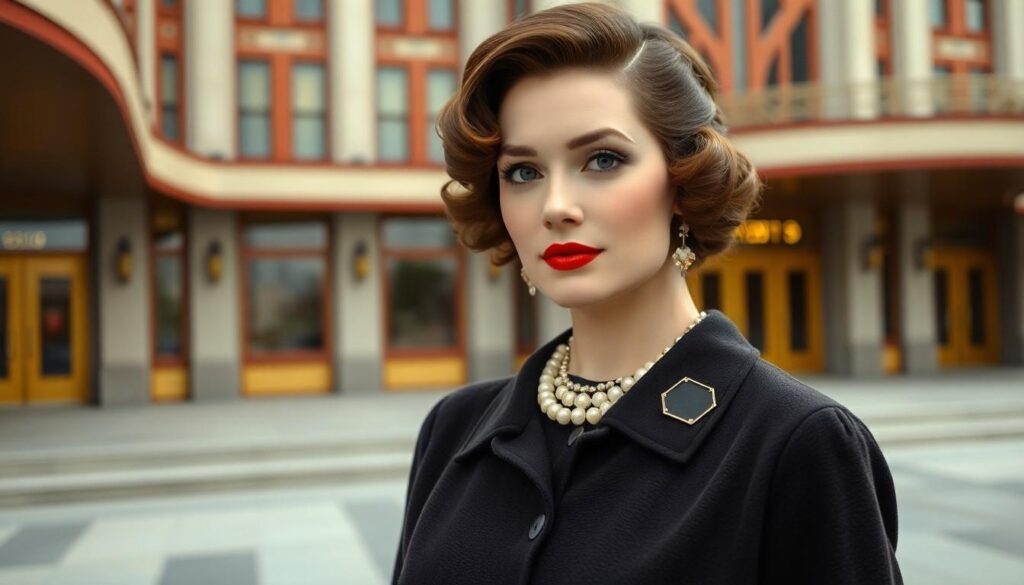Step back in time with us and discover the irresistible charm of 1930s hairstyles. There’s something captivating about the sleek waves and elegant curls that defined this glamorous era. Whether we’re drawn to vintage Hollywood or just want a fresh twist on our everyday look these classic styles have a way of making us feel effortlessly chic.
We don’t need a time machine to capture the allure of the 1930s. With a few styling tricks and the right inspiration we can transform our hair and channel the confidence of icons from the past. Let’s explore how these timeless looks can elevate our style and turn heads wherever we go.
Exploring Iconic 1930s Hairstyles
Let’s dive deep into the glamorous industry of 1930s hairstyles that defined an era of elegance. Finger waves lead the pack as one of the era’s signature looks. We see stars like Jean Harlow and Claudette Colbert flawlessly sporting these sculpted S-shaped waves for red carpet moments. Soft curls often take center stage, too, with women using pin curls overnight to achieve a natural bounce. Sleek bobs keep things neat and chic, offering a practical yet stylish solution that frames the face beautifully.
Many women embrace deep side parts as a simple way to add drama and sophistication. You’ll notice center parts less often, since the exaggerated side part quickly became the go-to for glamour. Faux bobs pop up as a clever alternative for those with longer hair. We can tuck and pin the ends under, instantly faking a shorter cut without reaching for scissors.
Ornamental hair accessories—think rhinestone clips, art deco combs, or velvet ribbons—bring extra flair to any style. These accents were more than just finishing touches; they helped set the tone for every occasion, from daily errands to evenings out. With each of these iconic styles, we get a glimpse of how fashion and practicality went hand in hand during the sophisticated 1930s.
Embracing the Finger Wave
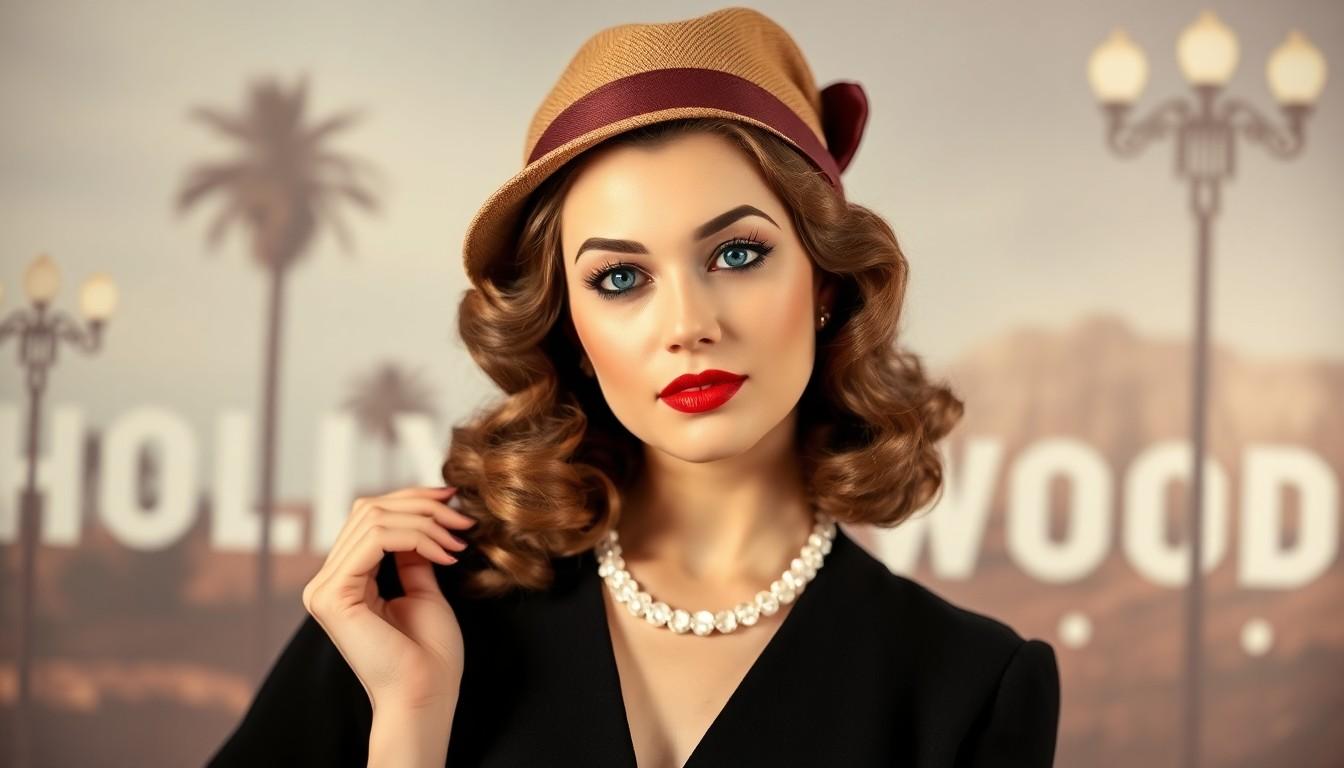
Let’s step into the industry of the finger wave, an iconic look that defined 1930s Hollywood style. This wave wasn’t just a hairstyle—it was a statement, gracefully evolving from the sharper looks of the roaring twenties into something more relaxed and glamorous.
Techniques for Creating Finger Waves
Slide our fingers through the basics and we’ll see finger waves really thrived thanks to a few clever tricks. We often started with wet hair, shaping each section to encourage deep, sculpted curves. Guiding the hair into S-shaped patterns, we used our fingers and a fine-tooth comb to lock in those perfect waves. In early 1930s salons, before heat tools became commonplace, women relied on patience and precision with wet setting techniques. For those with natural curls, it felt easier—we simply directed those curls into place, following the natural direction for an effortless wave. Permanent wave answers soon became a game-changer, letting us set lasting curls and waves with less daily fuss.
Celebrity Inspiration for Finger Wave Hairstyles
Glancing at the silver screen, we spot plenty of hair inspiration. Jean Harlow captures our attention first—her platinum waves paired fabulously with tilted hats made her look unforgettable. Barbara Stanwyck and Joan Blondell also rocked finger waves, showing off longer and looser curls that signaled the decade’s evolving glamour. These movie icons didn’t just shape film, they set the style agenda, making finger waves the must-have look for women seeking Hollywood-level elegance.
Mastering the Marcel Wave
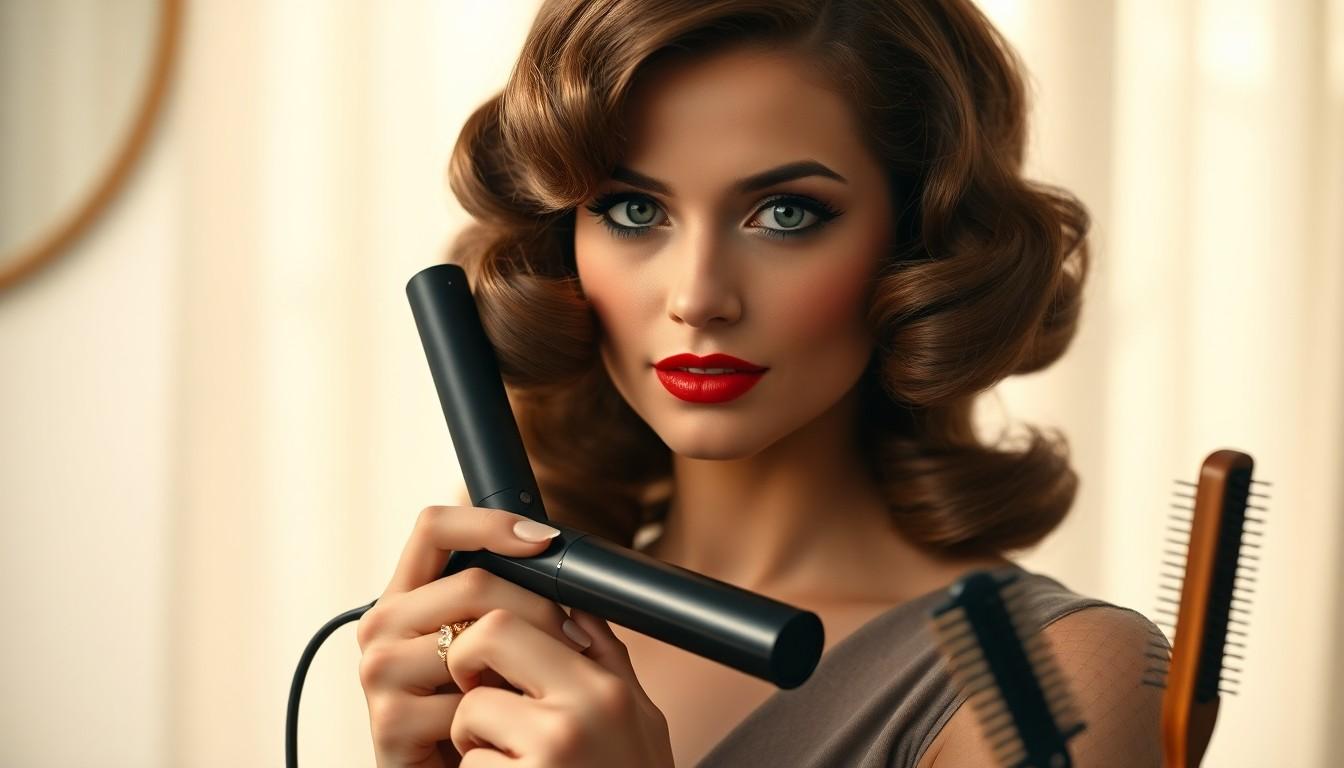
Step into the industry of 1930s glamour by trying out the Marcel wave. These iconic, deeply set waves defined elegance throughout the decade, gracing runways and silver screens alike.
Tools Needed for Marcel Waves
We’ll need to gather a few essentials for authentic Marcel waves. A Marcel iron comes first, which features a clamp and a comfortable handle; it was originally designed by Marcel Grateau to create those signature deep curves. Heat-resistant gloves or cloths will keep our hands protected since old-school irons get very hot. Hair clips or pins make sectioning easy and keep things organized. We should always have a reliable brush or comb on hand to smooth and detangle every strand. These tools set the stage for consistent results.
Step-by-Step Marcel Wave Tutorial
We always start by shampooing and thoroughly drying our hair to give ourselves the cleanest canvas. Using a brush or comb, we detangle and smooth everything out before dividing our hair into manageable sections with clips or pins—this sets us up for symmetrical waves.
Heating the Marcel iron is a must, but we should test the temperature carefully because these irons reach high heat quickly. For each section, we take the iron and clamp it about an inch from our roots, then gently wind the hair around the barrel, matching the direction we want our wave to flow. Holding that position for just a few seconds lets the heat work its magic.
Once we release the hair, letting it cool—either by air or with a cool setting—ensures the wave will keep its shape. We repeat this process section by section, moving methodically to capture even, cascading waves across our head.
All waves set, we carefully brush through them if a softer look is the goal. We might secure stubborn strands with pins or clips to polish our finished style. These steps help us channel vintage Hollywood sophistication using techniques women loved in the 1930s.
Rocking the Pin Curl Look

It’s hard to talk about 1930s hairstyles without calling out the pin curl. We can recreate this classic style at home and still turn heads, just like Hollywood icons did nearly a century ago.
How to Set Perfect Pin Curls
We begin with damp hair since moisture helps curls take shape and last. Taking a small section from the end, we gently wrap it upward toward the scalp, creating a neat curl. Holding the curl flat against our head, we secure it in place using a hairpin or clip. Waiting for the curls to dry completely is key—that’s how the style holds. Releasing each pin after drying, we brush through gently to blend the curls and create that signature 1930s wave.
Styling Variations for Pin Curl Hairstyles
We get creative by changing the direction and size of each pin curl, which lets us build different textures and wave patterns. Some days, we roll curls toward the face for a soft frame. Other times, we set them away for volume that radiates out. Combining pin curls with finger waves gives our hair extra drama and sleekness—a nod to true old Hollywood flair. Rolling smaller pin curls creates tight definition, while larger ones relax the look for loose, flowing waves. For special occasions, we use pin curls to make kiss curls right near the cheeks or forehead, adding that perfectly polished finish. Whether our hair is chin-length or grazes the shoulders, pin curls create deeply set waves that define the decade’s aesthetic. When our hair is longer, we can wave then gather it into a stylish low bun at the neck. Spritzing with setting spray locks the style for lasting hold, keeping our waves shiny and in place for hours. Placing curls strategically, either tucked back or more pronounced around the face, customizes the look to suit every mood or event.
Adopting Short Bob Cuts of the 1930s
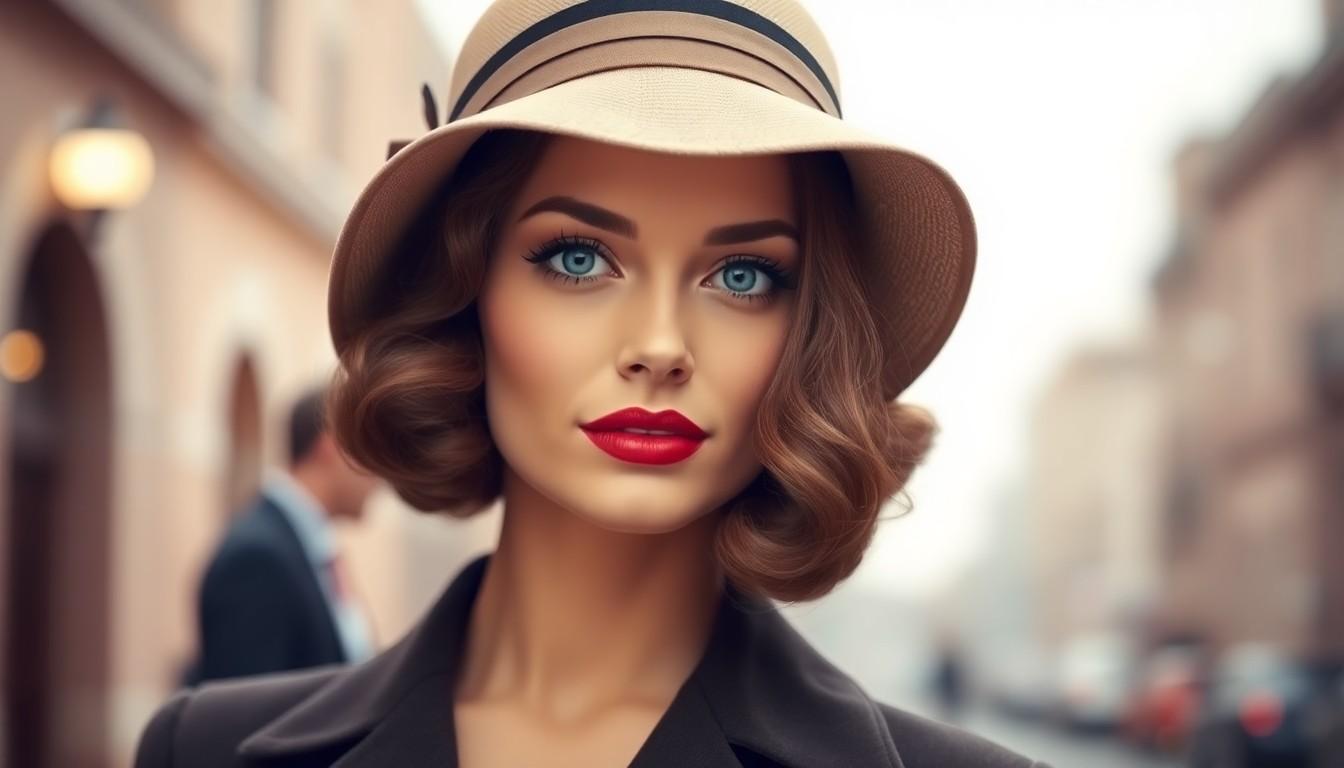
Short bobs in the 1930s looked distinctly softer and more romantic than earlier versions. We can draw inspiration from silver screen icons who helped bring these glamorous cuts to the mainstream.
Popular Bob Styles of the Era
Waved bobs dominated early 1930s fashion, giving us deeply set waves that hugged the head for a sleek yet dramatic effect. Finger waves stayed visible, especially during the transition from the 1920s, letting us enjoy bold, sculpted movement with every turn. Loose curls defined mid to late decade style, transforming bobs into chin- or shoulder-length masterpieces that echoed vintage Hollywood romance. Celebrities like Barbara Stanwyck and Joan Blondell made these looks iconic by pairing wavy texture with perfectly curled ends.
Tips for Maintaining a 1930s Short Bob
We find waving techniques essential for capturing that 1930s glamour, using wet wave sets or permanent waves to lock in shape. Regular trims keep our bobs crisp and hold the length right at the chin or just above the shoulders, avoiding uneven or split ends. Styling products like pomades or hair oils let us maintain sleekness, shine, and manage waves throughout the day. Accessories such as tilted hats or bold headbands instantly enhance our look, adding flair that was both practical and fashionable in the 1930s.
Experimenting With Updos and Chignons
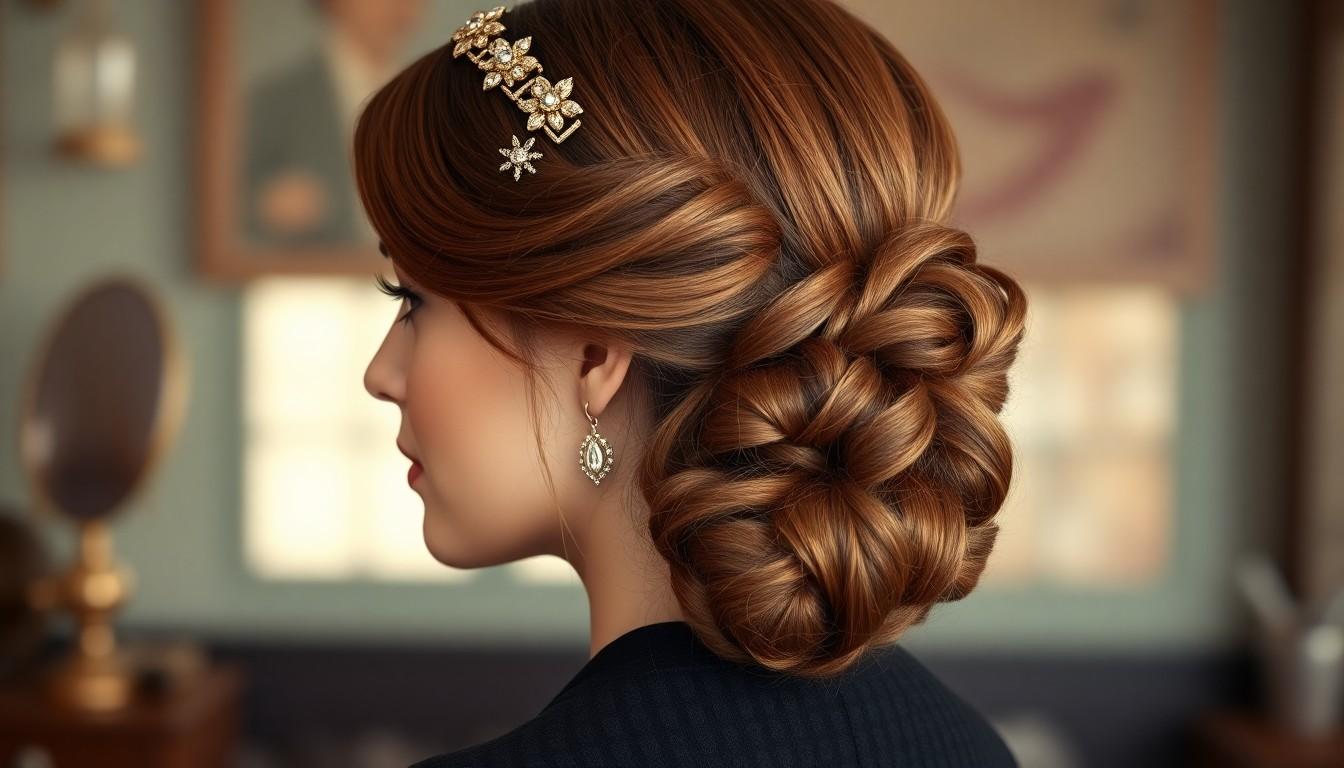
Let’s jump into the art of 1930s updos and chignons, where elegance met creativity and feminine silhouettes ruled. These styles brought polished curves and refined waves to life, especially as curls and updos rose to fame by the late 1930s.
Elegant 1930s-Inspired Updo Ideas
We usually start by waving our hair or setting it in deep waves, capturing the signature look of the era. Pinning these waves into a low bun at the nape gives us the perfect chignon, smooth and sleek just like women wore in the golden age. Sometimes, we twist sections before securing them, letting the texture add extra visual interest—a twisted crown or a simple low twisted bun works beautifully for vintage flair. Going for an upswept style, we might pull the curls up and pin them high, balancing the fullness on top with sleek sides. Each of these methods instantly channels the polished curves and chic feel that defined the 1930s.
Accessorizing Vintage Chignons
Adding accessories always completes the look and gives our updos an authentic vintage touch. We love reaching for bobby pins and hair clips, which hold each style securely and maintain that precise, sophisticated shape. Headbands or slim bands easily elevate the chignon, helping keep stray waves in check while nodding to old Hollywood glam. On special occasions, we’ll tilt a hat or perch an asymmetric style above our updo, mimicking 1930s fashion icons who paired romantic trims or witty hat details with beautifully swept hair. Choosing the right accessory makes every chignon feel personal and era-accurate, anchoring our 1930s experiment in undeniable elegance.
Adding Glamour With 1930s Hair Accessories
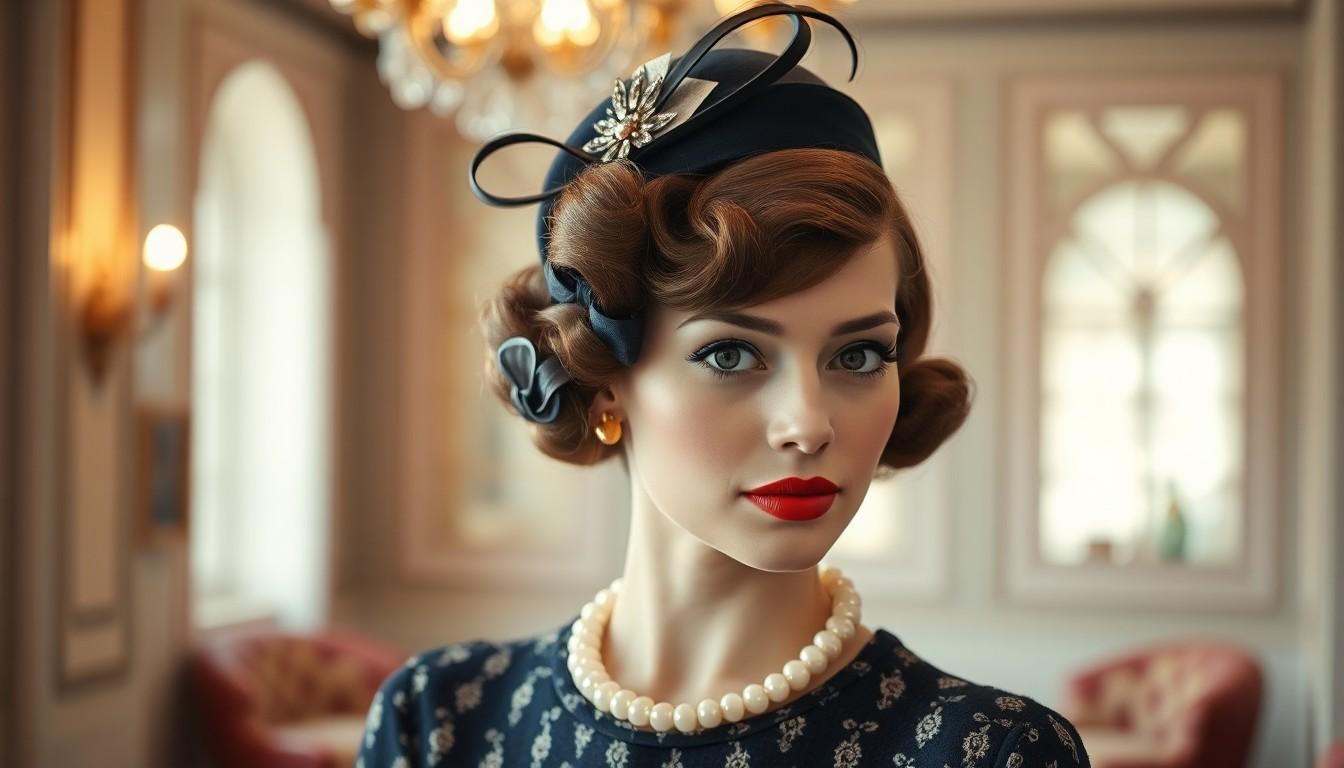
Adding the right hair accessories brings a touch of true 1930s glamour to our vintage hairstyles. Whether we’re going for a daytime wave or a glamorous evening updo, having authentic pieces or creating our own makes all the difference for an era-accurate finish.
Choosing Authentic 1930s Hair Accessories
Selecting accessories that echo real 1930s style gives our look credibility. We look for materials worn during the decade like fabric, metal or tortoiseshell, so our combs and barrettes blend perfectly with finger waves or pin curls. Designs featuring curved lines, floral motifs or art deco patterns immediately signal the era, especially when we find authentic pieces at vintage shops or reliable reproductions. Popular colors such as black, brown and pastels work well for blending accessories with natural or colored hair, allowing us to transform hairstyles effortlessly for work or special occasions. Adding tilted, asymmetric hats or slim headbands tops off any classic look, while bobby pins and decorative clips hold those meticulously set waves in place.
DIY Vintage Hair Accessory Projects
Creating our own accessories lets us personalize 1930s looks while using authentic details. When we sew slim headbands with vintage-inspired silk or cotton, adding small beads, lace or a cluster of flowers makes them feel true to the decade. Crafting hair pins or clips from metal or tortoiseshell invites us to decorate with tiny ornaments or even hand-engraved designs that mirror pieces seen in old photographs. Our DIY hats or fascinators—made from felt or straw with retro feathers, flowers or ribbons—become the perfect match for a wavy bob or polished chignon. Using real or reproduction combs from the right materials, then embellishing them with era-appropriate motifs, ensures that every updo or bun we create looks right at home in 1938. These projects let us channel our favorite Old Hollywood icons with just a few carefully chosen or handmade details.
Conclusion
Exploring 1930s hairstyles lets us step into a industry of timeless glamour and creativity. With a few styling tricks and the right accessories, we can capture the elegance that defined an unforgettable era.
Whether we’re drawn to soft waves, sculpted finger waves, or vintage-inspired updos, these looks offer endless inspiration for anyone seeking a touch of old Hollywood charm. Let’s celebrate our individuality by embracing these classic styles and making them our own.
Frequently Asked Questions
What are the most iconic 1930s hairstyles?
The most iconic 1930s hairstyles include finger waves, Marcel waves, pin curls, sleek bobs, and elegant updos. These styles are known for their smooth, sculpted waves and glamorous looks inspired by Hollywood stars like Jean Harlow and Claudette Colbert.
How can I achieve authentic 1930s finger waves at home?
To create finger waves, start with damp hair. Use your fingers and a fine-tooth comb to shape the hair into S-shaped waves, securing each wave with clips. Let the hair air dry or use a hood dryer for a firmer hold.
What tools are needed for Marcel waves?
You’ll need a Marcel iron, heat-resistant gloves, and sectioning clips. Carefully wind small sections of hair around the heated iron to form deep waves, repeating the pattern throughout your hair for a classic 1930s look.
Can I style 1930s looks if I have long hair?
Yes, you can style long hair into faux bobs or elegant updos that mimic 1930s styles. Pinning sections to create a shorter look or styling into a chignon allows you to enjoy vintage glamour without cutting your hair.
How do I make pin curls last longer?
Set pin curls in slightly damp hair, secure each curl tightly with pins, and allow them to fully dry before removing the pins. Using a setting spray or mousse can help hold the curls in place longer.
What hair accessories were popular in the 1930s?
1930s hairstyles were often paired with rhinestone clips, art deco combs, bold headbands, and tilted hats. These accessories added a touch of elegance and were designed to complement the era’s sophisticated styles.
Are 1930s hairstyles suitable for modern everyday wear?
Absolutely. 1930s hairstyles can be adapted for modern life, adding glamour and a vintage twist to your look. Soft waves, romantic bobs, and elegant updos work well for both special occasions and daily wear.
How do I keep a 1930s bob looking polished?
Maintain your bob with regular trims, use smoothing products, and style with deep waves or soft curls. Accessories like headbands or hats can also elevate your bob and complete the vintage-inspired look.
Can I DIY vintage hair accessories for these styles?
Yes, you can create your own 1930s-inspired accessories using materials like ribbon, faux gemstones, or metal. Look for inspiration in art deco shapes, floral motifs, or bold colors to match the decade’s aesthetic.
What celebrities popularized 1930s hairstyles?
Stars like Jean Harlow, Claudette Colbert, Barbara Stanwyck, and Joan Blondell were trendsetters. Their iconic finger waves, soft bobs, and glamorous updos set the style agenda for women of the decade.

